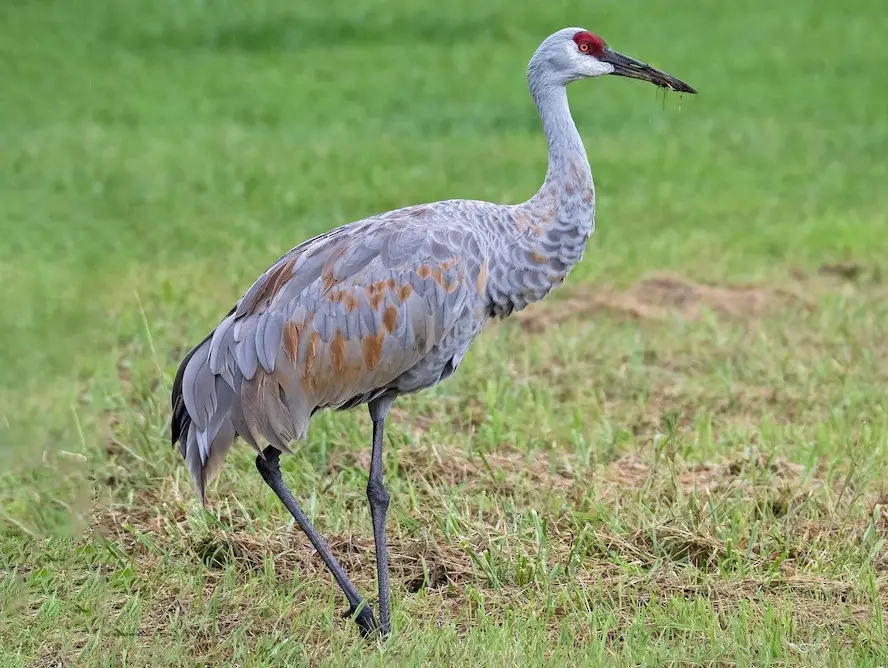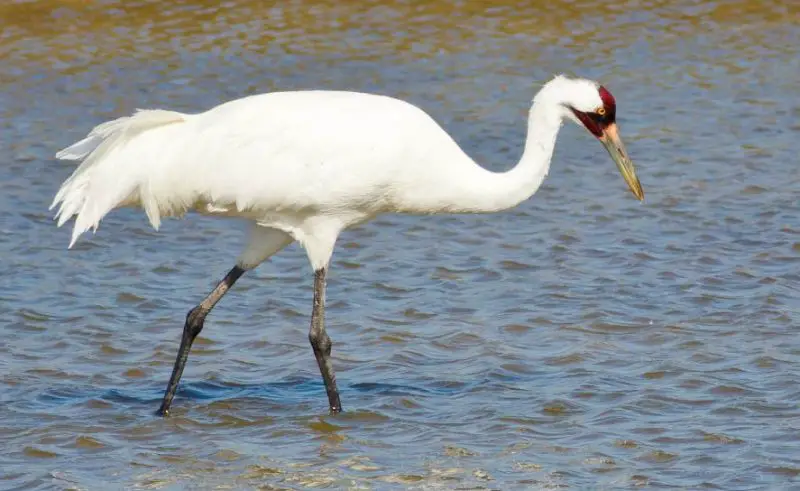Michigan, often celebrated for its Great Lakes, sprawling forests, and rich wildlife, is also a haven for some of North America’s most majestic birds—cranes. These tall, elegant birds, with their long legs and graceful necks, capture the fascination of both birdwatchers and nature enthusiasts. While cranes are not as ubiquitous as other bird species, their presence in Michigan offers an extraordinary opportunity to observe unique behaviors and seasonal migrations. Understanding the types of cranes in Michigan, their behaviors, and the best spots to view them can greatly enhance any wildlife exploration experience.
Cranes have a significant ecological role in Michigan’s wetland ecosystems. Their presence often indicates healthy wetlands, which support a variety of plants, fish, and other wildlife. Beyond their ecological importance, cranes have cultural and aesthetic value, inspiring art, photography, and conservation efforts. In Michigan, observing cranes is not just about birdwatching—it is a way to connect with nature and appreciate the intricate balance of wetland ecosystems.
Types of Cranes in Michigan
Michigan is home to two primary species of cranes: the Sandhill Crane (Antigone canadensis) and, less commonly, the Whooping Crane (Grus americana). Each species has distinct characteristics, habitats, and seasonal patterns that make them unique.
Sandhill Crane (Antigone canadensis)

The Sandhill Crane is Michigan’s most commonly observed crane species, renowned for its height, elegance, and striking presence in wetlands and open fields. Adult Sandhill Cranes stand between 3 to 4 feet tall and boast a wingspan ranging from 5.5 to 7 feet, giving them a commanding presence in their natural habitats. Their overall plumage is a soft gray, which often appears rusty due to staining from iron-rich mud where they forage. A defining feature is the bright red crown on their forehead, which becomes particularly vivid during courtship displays or when defending territory. Juveniles, by contrast, have a duller gray-brown coloration that gradually transitions to adult plumage over their first year.
Behaviorally, Sandhill Cranes are famous for their elaborate courtship dances. These dances include coordinated bows, leaps into the air, wing flaps, and synchronized calling, often performed by both members of a pair. These rituals serve not only as mating displays but also as a mechanism for reinforcing pair bonds and establishing social hierarchies within local populations. Sandhill Cranes are highly social, particularly during migration, forming large flocks that can number in the hundreds, offering dramatic visual spectacles across Michigan’s open landscapes.
In terms of diet, Sandhill Cranes are omnivorous and opportunistic feeders. They forage on grains and seeds in agricultural fields, while also probing wetlands and shallow waters for insects, small mammals, amphibians, and aquatic plants. Their long legs and flexible necks enable them to access both terrestrial and aquatic food sources efficiently.
Sandhill Cranes occupy a wide range of habitats across Michigan. They thrive in marshes, wet meadows, shallow lakeshores, and even agricultural areas where food is abundant. These birds often nest in secluded wetland areas, constructing large mound-like nests made from reeds and grasses. Migration seasons—spring and fall—are the best times to observe them, as thousands of cranes gather in staging areas in southern Michigan and along the Great Lakes, creating unforgettable opportunities for birdwatchers and photographers.
Whooping Crane (Grus americana)

The Whooping Crane is a rare and endangered species, with sightings in Michigan being an extraordinary event for wildlife enthusiasts. Adults are visually striking, with mostly pure white plumage, contrasting sharply with black wingtips visible in flight. These cranes reach approximately 5 feet in height and have a wingspan up to 8 feet, making them one of North America’s largest bird species. Their long, slender necks and legs enhance their elegant silhouette, while their distinctive, loud whooping calls can be heard over long distances and serve as both communication and territorial signals. Juveniles exhibit a tawny or grayish plumage, which gradually transitions to the iconic white as they mature.
Whooping Cranes are highly social and form strong lifelong pair bonds, often returning to the same mate each breeding season. Unlike Sandhill Cranes, Whooping Cranes are more selective in their habitat preferences. They favor remote, undisturbed wetlands, river deltas, and marshes, which offer both protection from predators and abundant foraging opportunities. Their diet is primarily aquatic, including crustaceans, small fish, frogs, and insects, although they occasionally feed on plant matter. The ability to exploit both aquatic and terrestrial food sources is essential for survival during migration and wintering periods.
Observing Whooping Cranes in Michigan is a rare and special experience, usually occurring during migration as individuals or small groups traverse the state en route to breeding or wintering grounds. Conservation efforts have been crucial in increasing their visibility, including reintroduction programs, habitat restoration, and careful monitoring by wildlife agencies. These initiatives have allowed scientists and birdwatchers to study their behavior, reproductive success, and migratory patterns, providing hope for the long-term survival of this magnificent species.
Behaviorally, Whooping Cranes are less gregarious than Sandhill Cranes outside of migration. Pairs or family groups exhibit synchronized movements and cooperative foraging, while vocalizations are used to maintain contact and coordinate activities. Their courtship rituals, while less frequent in the wild compared to Sandhills, also involve leaps, bows, and calling sequences that reinforce pair bonds. These behaviors, combined with their striking appearance and rarity, make observing Whooping Cranes a memorable experience for those lucky enough to encounter them in Michigan.
Crane Behavior in Michigan
Cranes exhibit a range of fascinating behaviors that make them a delight to observe. Their movements, social interactions, and seasonal routines provide insight into their adaptability and intelligence.
Migration Patterns
Cranes are highly migratory birds, with distinct seasonal movements that take them across vast distances. In Michigan, Sandhill Cranes begin their northward migration in early spring, returning from southern wintering grounds. These cranes often travel in large, V-shaped formations, which reduce wind resistance and conserve energy. Fall migration is equally impressive, as thousands of cranes descend upon Michigan’s wetlands and agricultural fields, preparing for the journey south to warmer climates.
Whooping Cranes also migrate through Michigan, though sightings are much less common. These birds follow specific migratory routes, often guided by family groups or experienced adult birds. Migration timing is influenced by weather patterns, availability of food, and habitat conditions, making crane migration a dynamic and sometimes unpredictable phenomenon.
Courtship and Social Interactions
One of the most captivating aspects of crane behavior is their courtship rituals. Sandhill Cranes perform complex dances that involve leaping, bowing, and spreading their wings while calling out in unison. These dances strengthen pair bonds, signal readiness to mate, and establish social hierarchy within flocks. Cranes are generally monogamous, maintaining long-term partnerships and often returning to the same nesting sites year after year.
Cranes are also highly vocal, using a combination of calls and postures to communicate. Their calls serve various purposes, from signaling danger to coordinating group movements during migration. Observing these vocalizations in the wild provides a window into the social complexity of crane populations in Michigan.
Feeding and Foraging
Cranes are versatile feeders. Sandhill Cranes often forage in open fields, agricultural lands, and shallow wetlands. They probe the soil for insects, worms, and small vertebrates, while also consuming seeds, grains, and berries. Whooping Cranes rely more heavily on aquatic prey, including small fish and crustaceans, which they skillfully catch in shallow waters.
Cranes typically forage in groups, especially during migration. Group foraging increases efficiency and provides protection from predators. Their long legs and flexible necks allow them to access food in a variety of habitats, demonstrating remarkable adaptability to changing environmental conditions.
Best Viewing Spots for Cranes in Michigan
Michigan offers numerous locations where birdwatchers can observe cranes in their natural habitats. These sites range from expansive wetlands to protected wildlife refuges, each offering unique opportunities for close encounters with these magnificent birds.
Shiawassee National Wildlife Refuge
Shiawassee National Wildlife Refuge, located near Saginaw, is one of Michigan’s premier spots for crane observation. This refuge encompasses extensive wetlands, open meadows, and shallow lakes, providing ideal habitats for Sandhill Cranes during migration. Early spring and fall are the best times to visit, when cranes gather in large flocks to feed and rest. Birdwatchers can often observe the iconic courtship dances and hear the resonant calls that define crane communication.
Seney National Wildlife Refuge
Seney National Wildlife Refuge in the Upper Peninsula offers another excellent crane viewing experience. This refuge features a mosaic of marshes, bogs, and forested wetlands that attract both Sandhill and occasional Whooping Cranes. Wildlife enthusiasts can witness cranes foraging, interacting socially, and preparing for migration. The refuge’s well-maintained observation platforms and trails make it accessible for photographers and birdwatchers of all levels.
Northern Lower Peninsula Wetlands
Beyond designated refuges, cranes can be found throughout Michigan’s northern Lower Peninsula, especially in areas with abundant wetlands and agricultural fields. Locations near Grayling, Alpena, and Petoskey provide opportunities to see cranes in natural settings, away from the crowds. Visiting these areas during peak migration periods enhances the likelihood of encountering large flocks, performing mating dances, and hearing the signature crane calls echoing across open landscapes.
Seasonal Considerations
Timing is crucial when planning a crane-watching trip in Michigan. Early spring offers a chance to see cranes returning from southern wintering grounds, while late fall provides an opportunity to observe them gathering in preparation for migration. Winter sightings are rare, as most cranes move to warmer climates. Checking local wildlife reports and migration forecasts can help birdwatchers maximize their viewing experience and locate active crane populations.
Conservation and Ecological Importance
Cranes are not only captivating but also serve as indicators of wetland health in Michigan. Healthy crane populations reflect well-functioning ecosystems that support diverse wildlife communities. Conservation efforts focus on protecting wetland habitats, monitoring population trends, and supporting reintroduction programs, particularly for Whooping Cranes.
Organizations such as the Michigan Department of Natural Resources, Audubon Society, and various wildlife refuges play vital roles in crane conservation. Educational programs and guided tours encourage public awareness and involvement, ensuring that future generations can continue to witness cranes in Michigan’s wild landscapes. Protecting these birds requires a combination of habitat preservation, research, and responsible wildlife observation practices.
Conclusion
Cranes in Michigan are a remarkable symbol of the state’s natural beauty and ecological diversity. The Sandhill Crane dominates the region, offering frequent sightings and memorable behaviors, while the rare Whooping Crane represents a triumph of conservation efforts. Observing cranes involves appreciating their intricate social interactions, dramatic courtship dances, and extensive migratory journeys.
Michigan’s wetlands, refuges, and open landscapes provide ideal conditions for crane observation, making the state a destination for birdwatchers and nature enthusiasts. By understanding crane types, behaviors, and optimal viewing locations, visitors can enjoy an immersive experience that highlights both the majesty of these birds and the importance of preserving their habitats. Protecting cranes and their ecosystems ensures that these elegant creatures will continue to grace Michigan’s skies for generations to come.
FAQs About Cranes in Michigan
What types of cranes can be found in Michigan?
Michigan is home to two main crane species. The Sandhill Crane (Antigone canadensis) is the most common, found in wetlands, meadows, and agricultural areas throughout the state. The Whooping Crane (Grus americana) is much rarer and endangered, typically seen during migration in remote wetlands or river delta regions.
When is the best time to see cranes in Michigan?
The prime times for observing cranes are during spring and fall migration. Sandhill Cranes gather in large flocks in southern Michigan and near the Great Lakes, providing spectacular viewing opportunities. Whooping Cranes are occasionally observed during the same periods but sightings are far less frequent.
What habitats do Sandhill Cranes prefer?
Sandhill Cranes thrive in marshes, wet meadows, shallow lakeshores, and agricultural fields. They favor areas with abundant vegetation for nesting and open spaces for foraging. During migration, they often gather in fields and wetlands that provide easy access to food.
What do Sandhill Cranes eat?
Sandhill Cranes are omnivorous and opportunistic feeders. Their diet includes grains, seeds, berries, insects, small mammals, amphibians, and aquatic plants. They forage both on land and in shallow water, using their long legs and flexible necks to reach diverse food sources.
How can I identify a Whooping Crane?
Whooping Cranes are larger and strikingly white with black wingtips visible during flight. They have long, slender necks and legs, and their distinctive loud whooping call can be heard from a distance. Juveniles are tawny or grayish before maturing into white adults.
What is the behavior of cranes in Michigan?
Cranes are social and communicative birds. Sandhill Cranes perform elaborate courtship dances involving bows, jumps, wing flaps, and synchronized calls. Whooping Cranes are less gregarious outside migration but maintain strong pair bonds and cooperative behaviors in family groups.
Are cranes endangered in Michigan?
While Sandhill Cranes are not endangered and have stable populations, the Whooping Crane is critically endangered. Conservation programs and habitat protection efforts have been key in allowing occasional sightings in Michigan.
How do cranes migrate?
Cranes migrate seasonally in spring and fall, often forming large V-shaped flocks. Migration patterns are influenced by food availability, weather conditions, and habitat suitability. Sandhill Cranes migrate in large groups, whereas Whooping Cranes migrate in smaller, closely-knit family units.
Can I photograph cranes in Michigan?
Yes, but it is important to maintain a safe distance to avoid disturbing the birds. Early mornings and late afternoons during migration provide the best lighting and activity for photography, especially in wetlands and open fields where cranes forage and display courtship behaviors.






